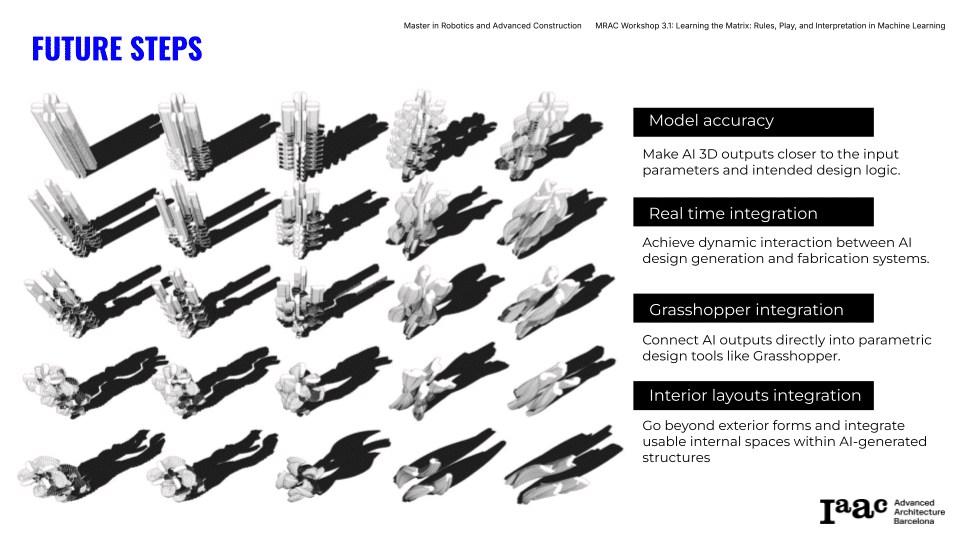Rethinking Towe Typology with AI:
This project explores the redesign of contemporary tower structures using machine learning (ML), challenging the repetitive, profit-driven design seen in cities like Hong Kong. The goal is to discover new typologies through AI and stacking rules, and tren translate them to a robotic fabrication system (pick and place). AI-generated towers were curated for stability and aesthetic character before being realized through robotic construction techniques.

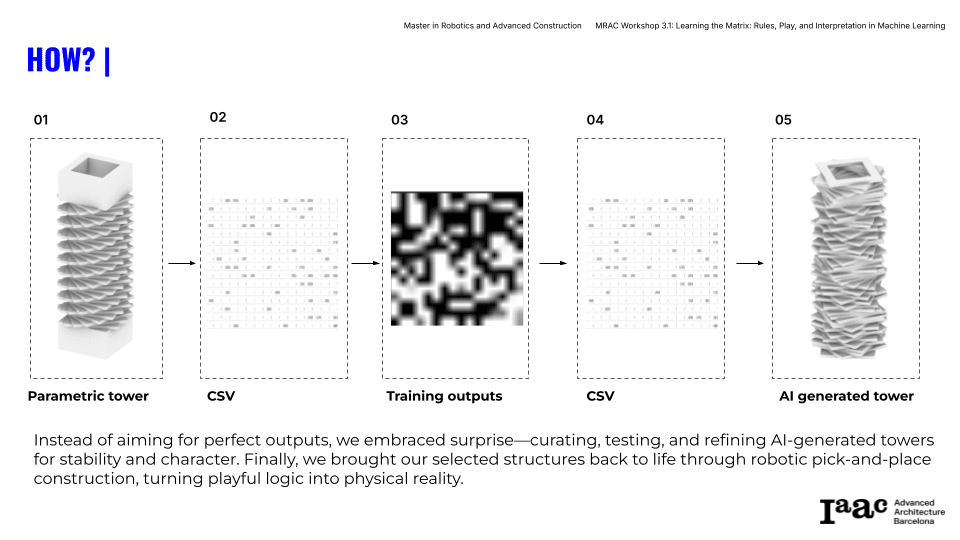
Methodolgy
The methodology integrated several tools in a collaborative system: Grasshopper for parametric design, Python for data processing, and machine learning algorithms to train models. The workflow moved through stages of design, simulation, CSV data export/import, and robotic fabrication, enabling the transformation of digital designs into physical structures.
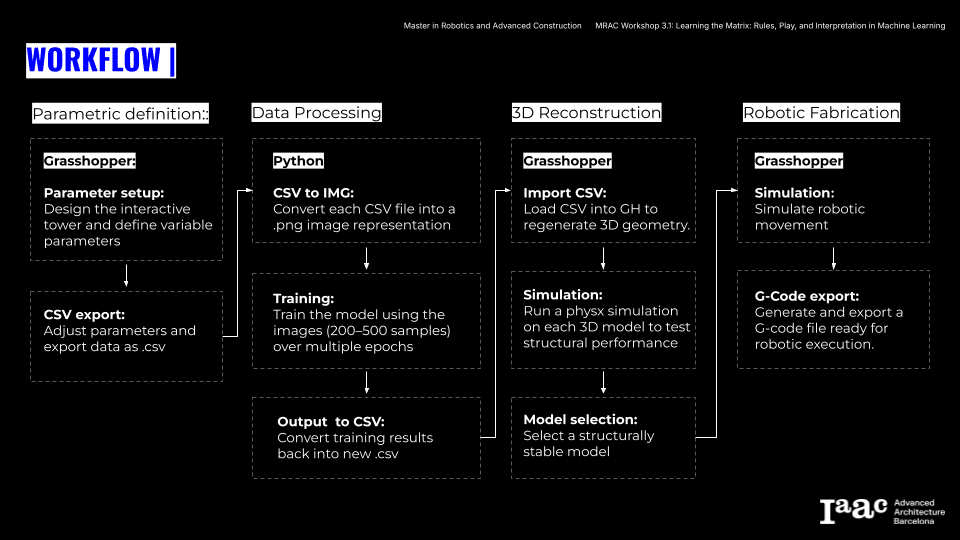
Design Process
The design process involved exploring a series of towers with different configurations and stacking patterns using KAPLA. Various angles, heights, and numbers of pieces were tested to understand how these variations impacted stability and aesthetics. Through physical simulations, different designs were evaluated to select those with the best structural integrity, advancing the project to the robotic fabrication stage.
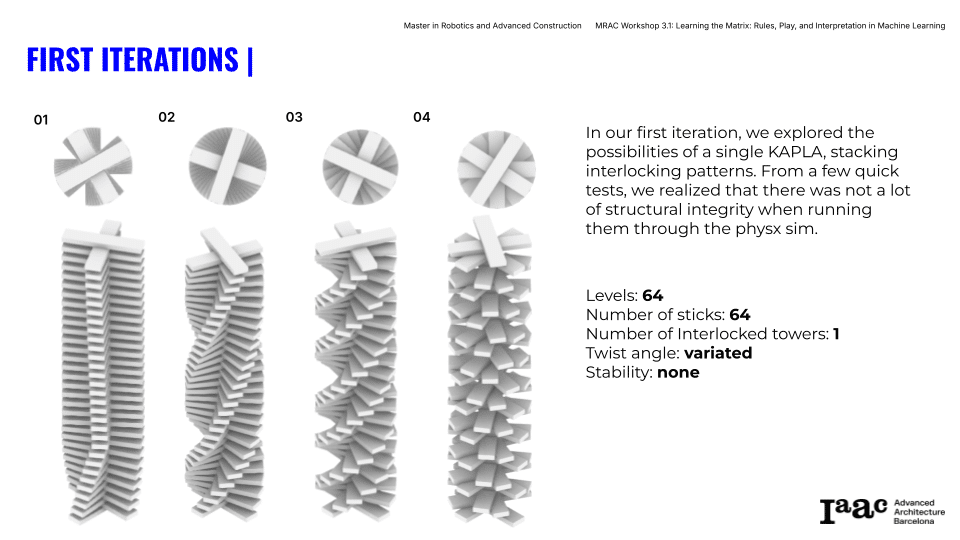
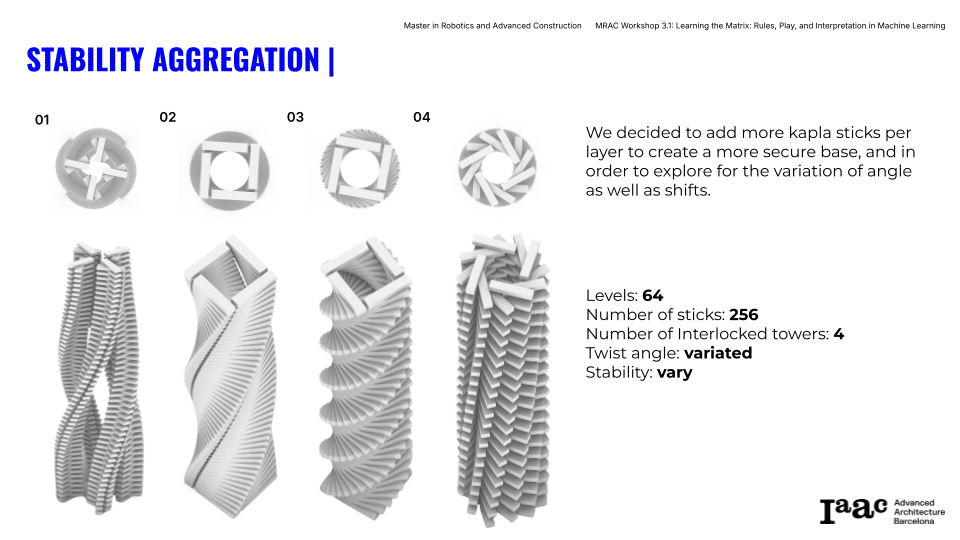
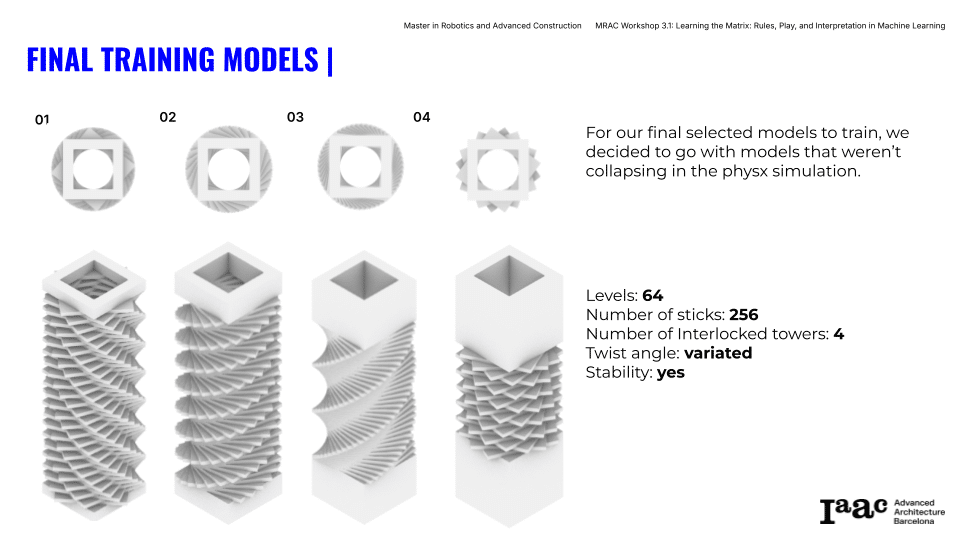
Physx Simulation
The PhysX simulation was used to test the structural integrity of the AI-generated tower models. Each design was simulated to assess its stability under various conditions, focusing on how well the stacked elements would hold up. This step helped identify the most stable configurations, allowing us to filter out designs that collapsed or showed poor performance. The selected models, which passed the simulation, were then ready for further refinement and robotic fabrication.
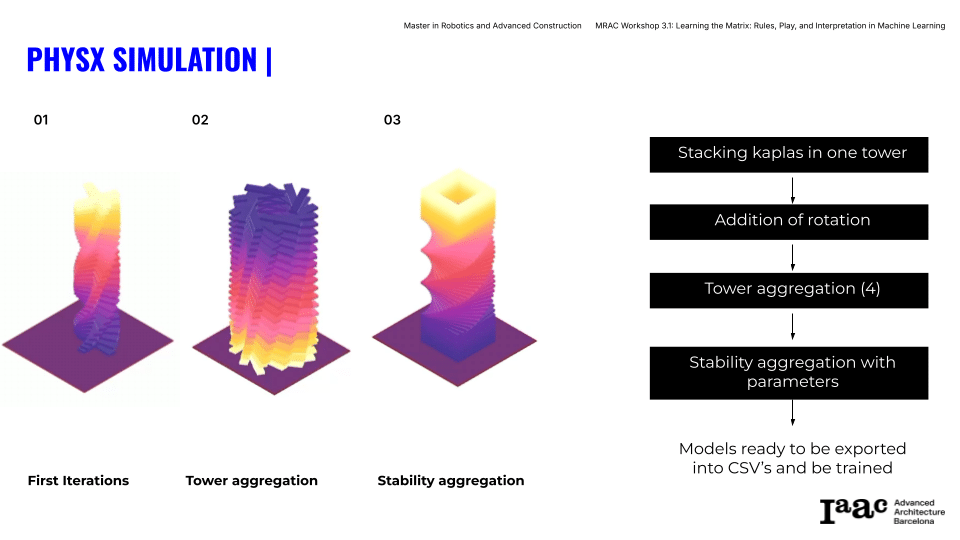
The Machine Learning Process
After completing the PhysX simulation and selecting stable tower models, we entered a phase of iterative interaction to further refine the designs. These selected models were used to train the machine learning (ML) algorithm, allowing it to generate new tower outputs. The process involved feeding the stable models back into the algorithm and running multiple training epochs to create various new designs. This iterative loop of training and model generation enabled us to explore a broader range of possibilities, ensuring that the AI could produce both structurally sound and innovative tower designs.
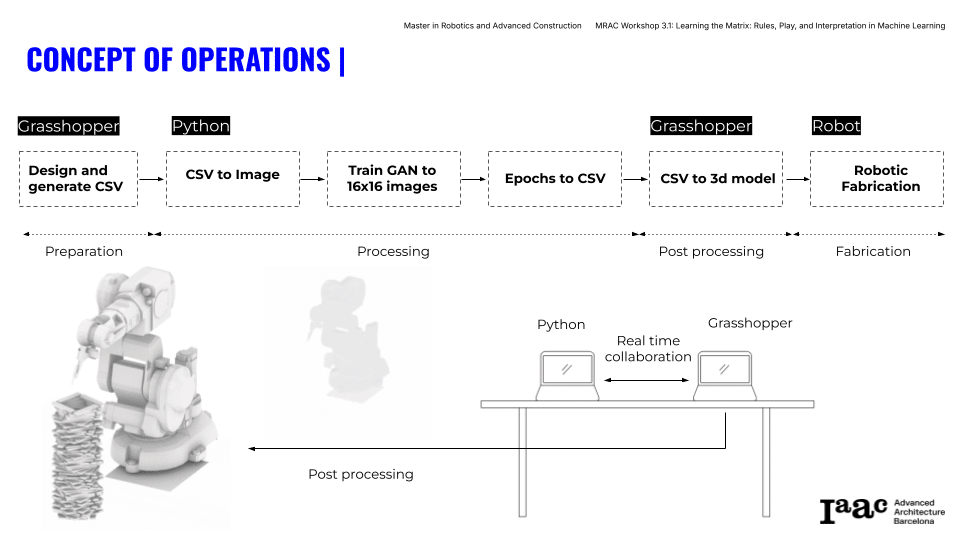
Machine Learning Outputs
These tower designs were generated through machine learning (ML) after training the algorithm with various parameters and stable models. The images show the results of different epochs, where the algorithm created new variations of tower configurations, each with a unique stacking pattern and twist angles. These designs underwent multiple iterations to ensure structural stability and visual complexity. After reviewing several outputs, the most stable and aesthetically appealing towers were selected, as shown in the second set of images, where the final models are displayed with clear structure and stability. These final models were chosen for further testing and eventual robotic fabrication.
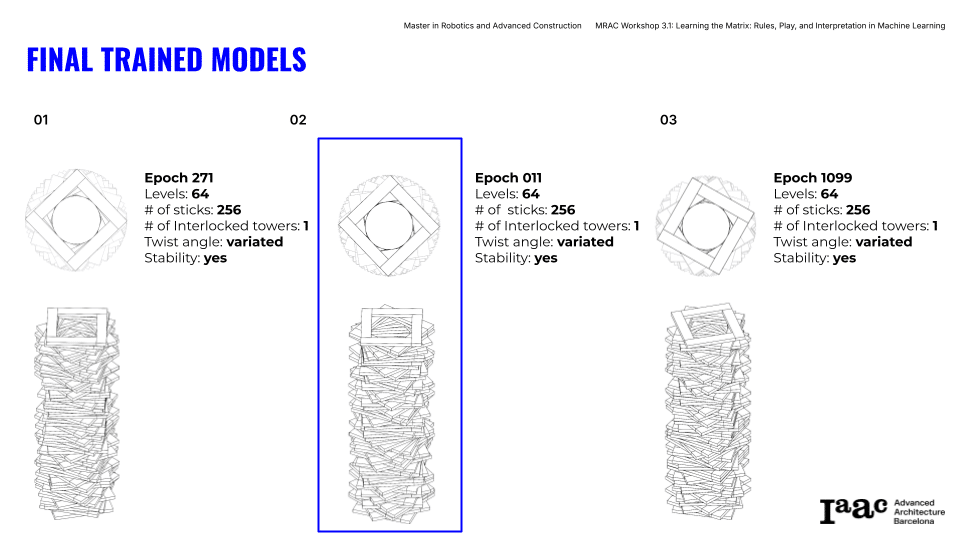
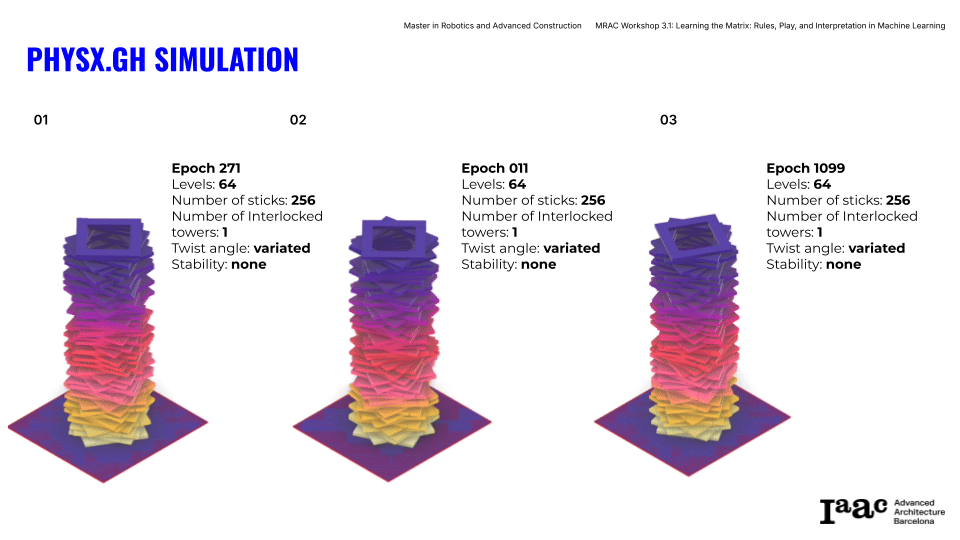
Conclusion and next steps
